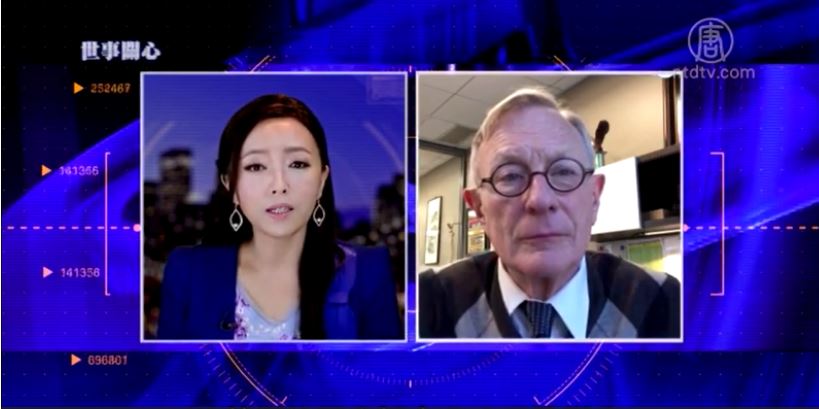
|
January 30, 2018
NTD Interview
|
|
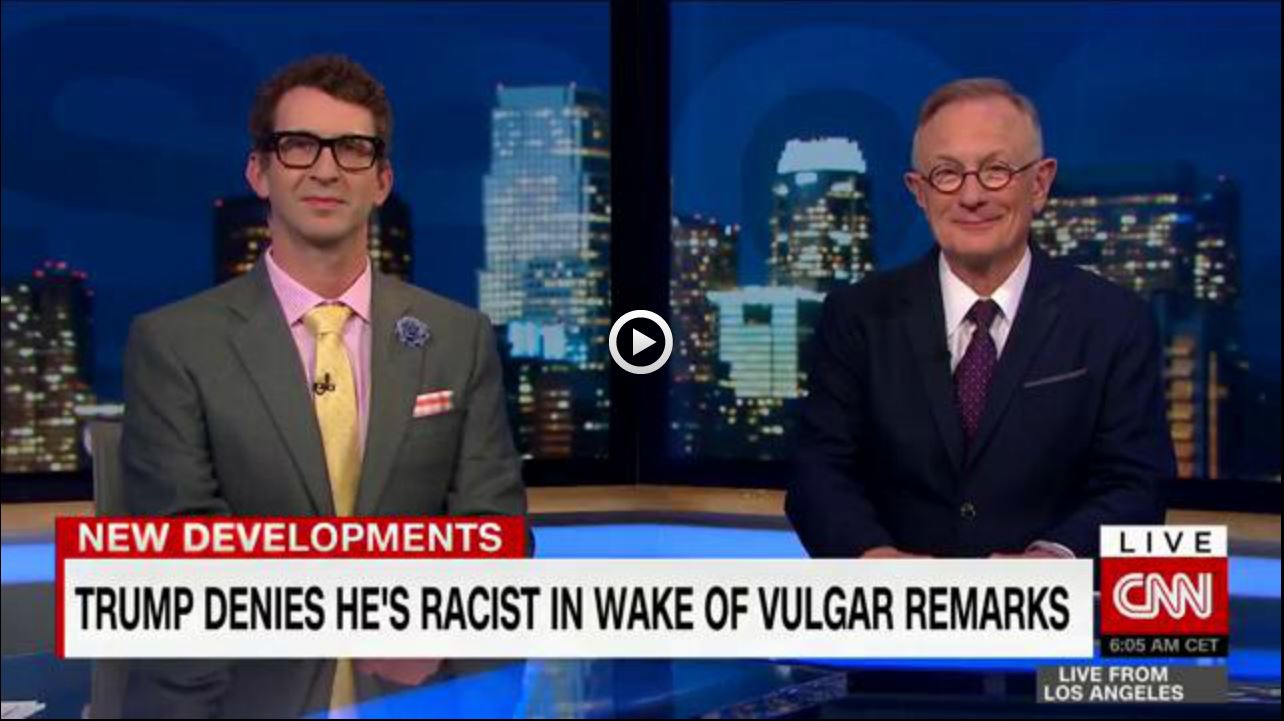
|
January 16, 2018
CNN Interview - Part 1
|

|
January 16, 2018
CNN Interview - Part 2
|
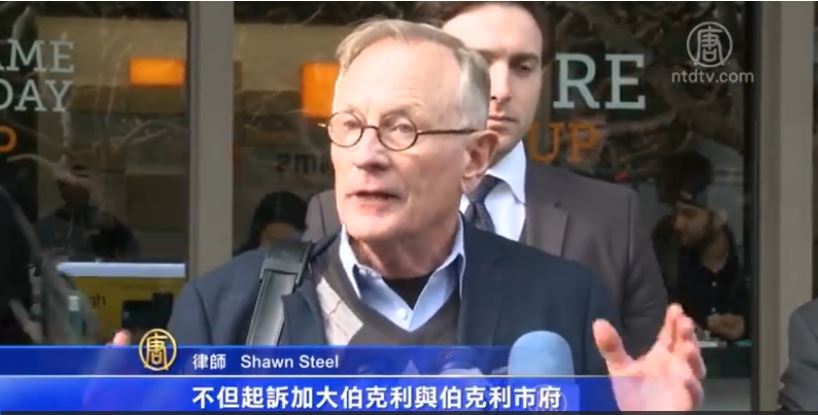
|
January 16, 2018
Press Conference
|
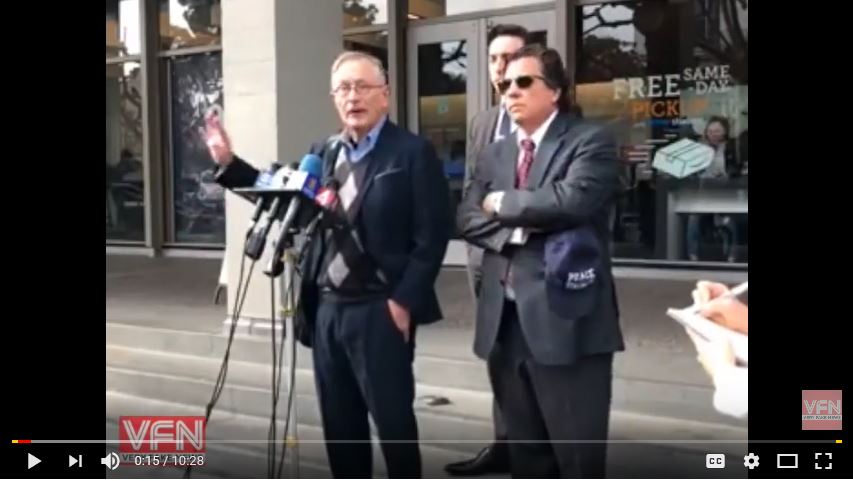
|
January 16, 2018
Press Conference
|
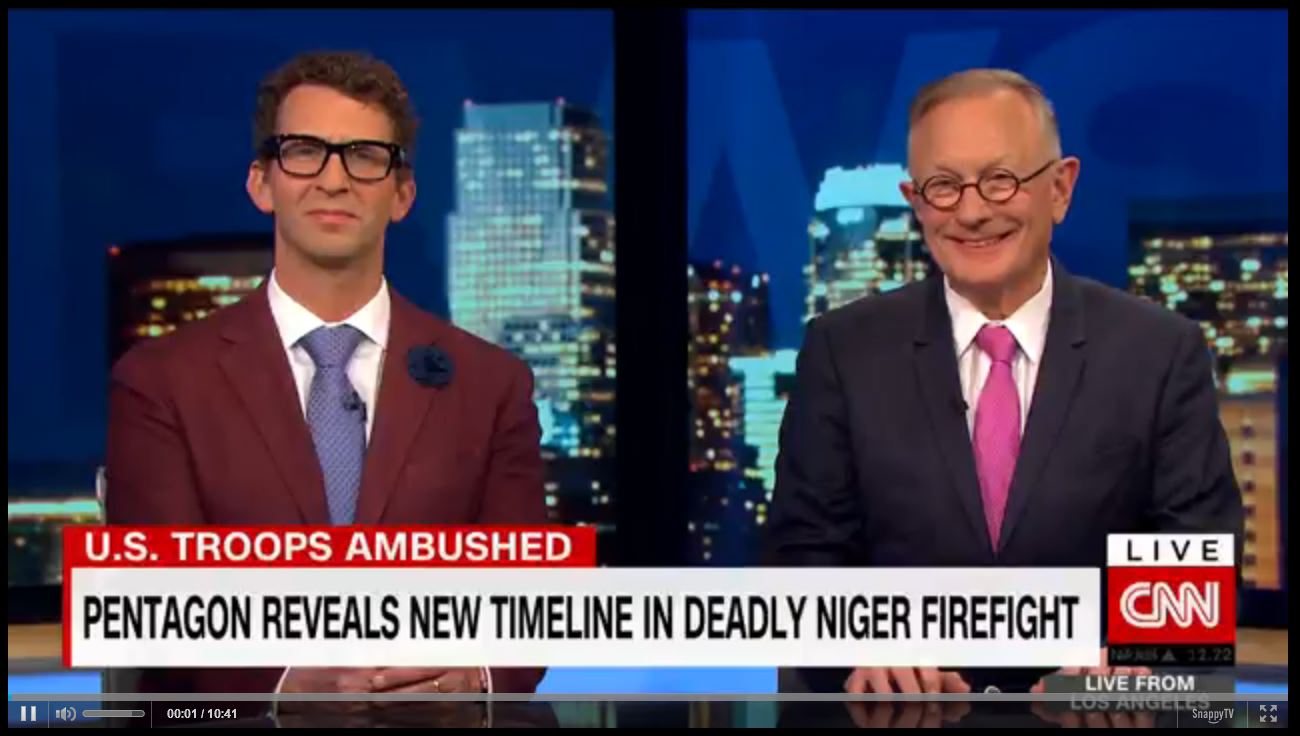
|
October 24, 2017
CNN Interview
|
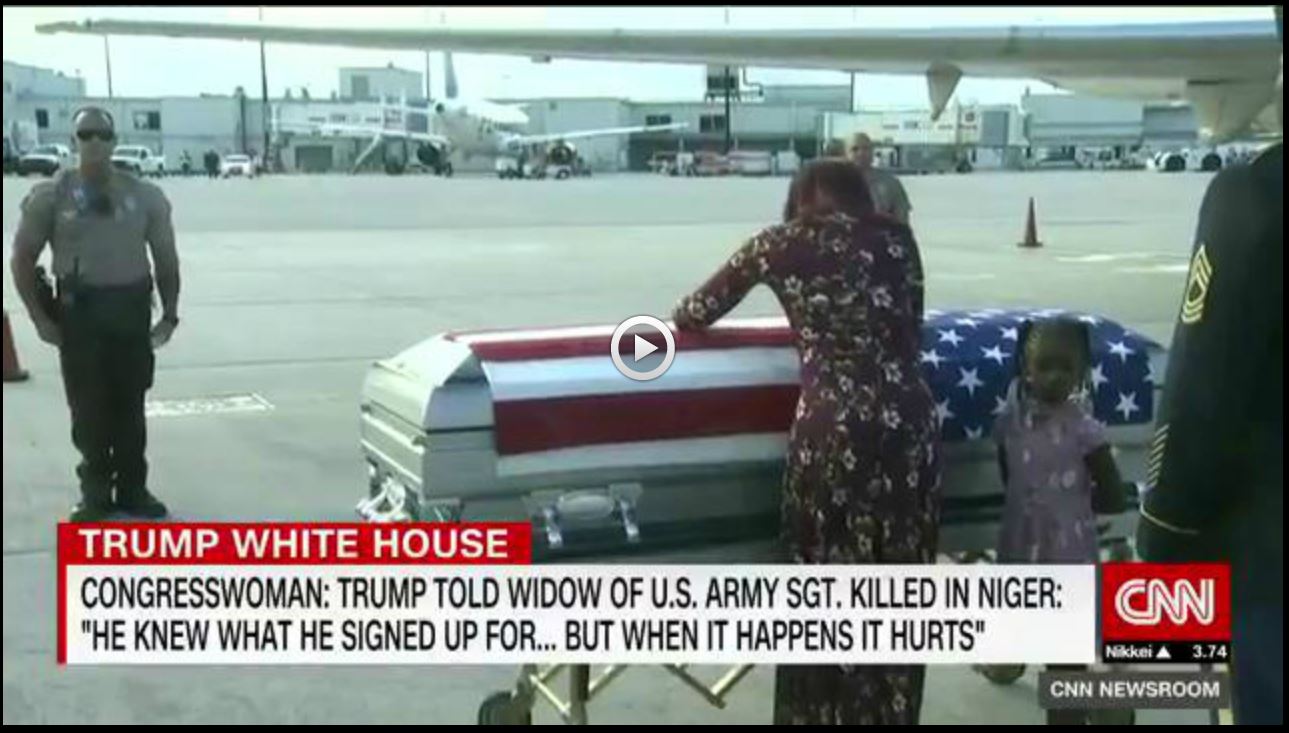
|
October 18, 2017
CNN Interview
|
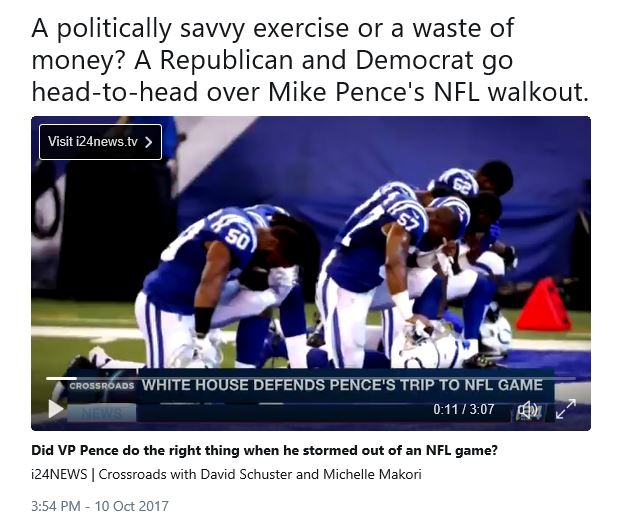
|
October 10, 2017
i24News Interview
|
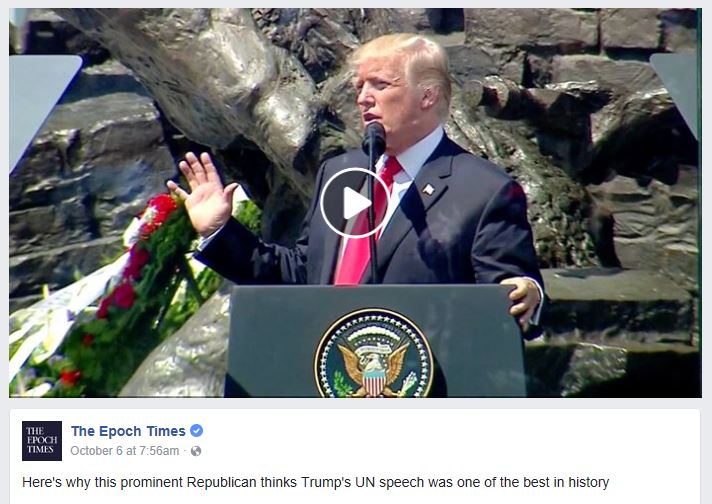
|
October 6, 2017
The Epoch Times Interview
|
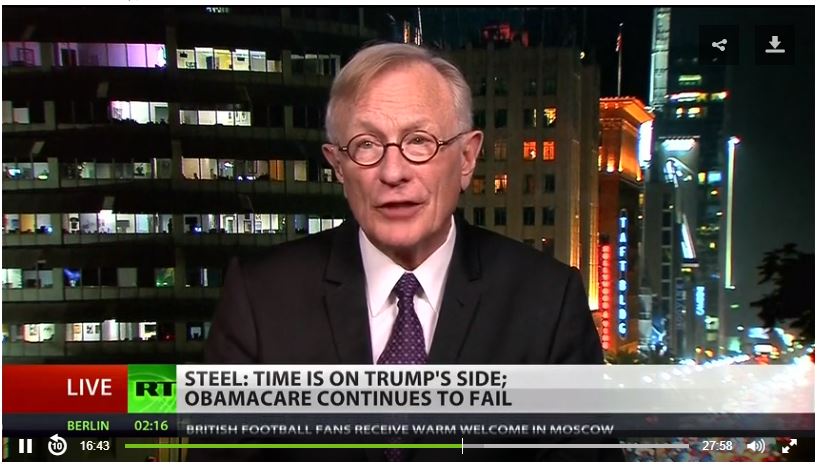
|
September 27, 2017
RT America Interview
|
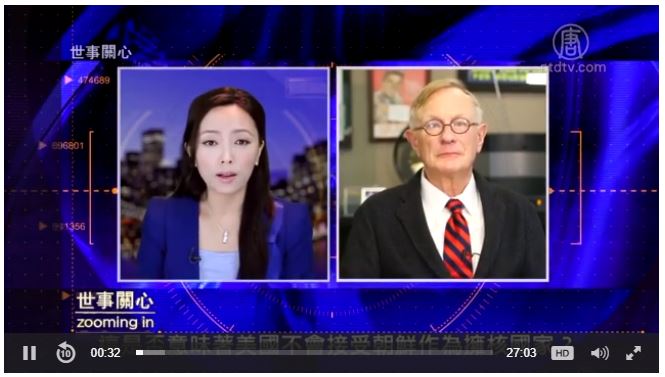
|
September 26, 2017
NTD Interview
|
|
|
|
|
|
|
|

Pandemic heightens stakes for Pence, Harris vice presidential debate
October 06, 2020
President Trump’s COVID-19 diagnosis and brief hospitalization has upped the ante for Wednesday night’s high-stakes vice presidential debate in Salt Lake City.
Sen. Kamala D. Harris, the Democratic vice presidential nominee, already was seen as something of a president-in-waiting for nominee Joseph R. Biden, 77, who referred to himself as a “transition” candidate earlier this year when pressed about his age.
Vice President Mike Pence now will have to answer not only for the president’s handling of the COVID-19 crisis but also for its spread throughout the White House and the uncertainty surrounding Mr. Trump’s health.
“The stakes in this election have never been higher. The choice has never been clearer,” Mr. Pence said Monday as he headed to Utah. “I look forward to the opportunity to take our case to the American people for four more years.”
Mr. Trump’s doctors said he wasn’t “out of the woods yet” but his health appeared to be improving Tuesday, which likely dialed back some debate questions about Mr. Pence stepping into the job.
Still, the line of succession will be on the minds of Americans as they tune into the prime-time debate.
As will be the Trump administration’s handling of the pandemic, which has resulted in more than 7.4 million coronavirus cases in the U.S. and contributed to the deaths of more than 210,000 Americans.
Those are among more than 35 million cases and 1 million deaths worldwide, according to Johns Hopkins University.
Because of the COVID-19 outbreak at the White House, Mr. Pence released a doctor’s memo Tuesday vouching for his good health and verifying that his daily coronavirus tests were all negative.
Mr. Pence traveled Tuesday through Thursday of last week but stayed home on Friday, Saturday and Sunday as a precaution.
The doctors said Mr. Pence is not considered a close contact of the president or other White House cases, given the course of their infections, and does not need to quarantine.
The Harris and Pence teams were haggling Tuesday over walling off the candidates with Plexiglas dividers on the stage as part of safety measures.
Mr. Pence’s staff said the Plexiglas divider was unnecessary after other precautions, such as a 12-foot buffer between the debaters, already in place.
After saying earlier in the evening that it would not accept the transparent screens, the Pence team reportedly relented after a meeting with the Commission on Presidential Debates and the Harris team.
Mr. Pence and Ms. Harris also are undergoing daily COVID-19 tests.
When it gets down to the business of actually trading jabs in the debate, Republican consultant Keith Naughton said Ms. Harris will play it safe. She won’t want to rock the boat with Mr. Biden leading in most polls.
“I think she’ll want to be calm and magnanimous,” he said. “Pence isn’t aggressive at all like Trump.”
Before the debate, Ms. Harris said the biggest thing she is preparing for “what is I think very likely to be a series of untruths.”
“I don’t necessarily want to be the fact-checker,” she said. “At the same time, depending on how far he goes with whatever he does he’s going to have to be accountable for what he says.”
Ms. Harris made those comments on 2016 Democratic presidential nominee Hillary Clinton’s new podcast, where Mrs. Clinton also warned that Ms. Harris should be prepared for sexist slights.
Four years ago, Mr. Pence dutifully downplayed or deflected when asked about some of Mr. Trump’s more provocative statements and proposals, even as 2016 Democratic vice presidential candidate Sen. Tim Kaine interrupted him at least 70 times.
Deb Nelson, who chairs the Hanover/Old Lyme Town Democrats in New Hampshire, said the pressure will be on Mr. Pence to turn in a solid performance after the off-the-rails debate between Mr. Trump and Mr. Biden last week in Cleveland.
“I mean, frankly, from the minute she was named to the ticket, people have been anticipating this debate,” Ms. Nelson said. “She’s going to go after Pence and I don’t think he’s going to know what hit him.”
She said Mr. Pence, known for his stoic style and unquestioning loyalty to Mr. Trump, reminds her of one of the cardboard cutouts that have been “attending” sporting events during the coronavirus pandemic as a substitute for actual fans.
“I feel like that’s Pence. He could be a robot,” she said.
While Democrats certainly aren’t fans of Mr. Pence, the former congressman — who described himself as “Rush Limbaugh on decaf” during his talk radio days — has provided an effective bridge for some elements of the GOP base that were wary of Mr. Trump four years ago.
“Mike Pence is a policy wonk with a smile,” said Shawn Steel, a Republican National Committee member from California.
Mr. Pence has been leading the White House coronavirus task force and has won bipartisan praise from governors who aren’t necessarily the biggest fans of Mr. Trump or his response to the pandemic.
Mr. Steel predicted that Ms. Harris, a senator from his home state, will have something of a reverse-fine wine effect on the American people, calling her “inauthentic” and “a bit of a confused person.”
“The more you see of her, the less you will be impressed,” he said. “She doesn’t have widespread affection by Democrats because she’s as close to an empty-suit politician as you have in California.”
Mr. Steel pointed to her flubbing recent shout-outs involving deceased rappers Tupac Shakur and the Notorious B.I.G. as an example of ham-fisted efforts to show how “relevant and cool and hip she is.”
Ms. Harris was something of a policy chameleon during her own presidential bid. She equivocated multiple times on the government-run “Medicare for all” proposal that was pushed by Sen. Bernard Sanders of Vermont before backing away and rolling out her health plan that was immediately panned on all sides.
“She doesn’t have any philosophical core,” Mr. Steel said.
Pete Buttigieg, the former presidential candidate who has tangled with Mr. Pence over issues in their home state of Indiana, has been standing in for the vice president in some of the debate prep.
“I don’t envy the job he’s going to have to do,” Mr. Buttigieg said during a recent appearance on Fox News. “You’ve got a professed Christian who’s going to be in the position of defending the character of a president who got caught sending hush money to a porn star.”
Mr. Pence enlisted former Florida Attorney General Pam Bondi to stand in during debate for Ms. Harris, who served as California attorney general.
Ms. Bondi said the vice president is prepared for a tough opponent on the debate stage.
“She’s a career prosecutor. So prosecutors can debate and can debate well,” Ms. Bondi said on Fox News. “She can pour over briefing books all day long to learn about policies but he has lived them for the past three-and-a-half years.”
Though sometimes regarded as a sideshow, the vice presidential debate has offered some memorable moments in recent years.
Mr. Biden himself squared off against Sarah Palin, then a relatively little-known Alaska governor, in 2008.
Mrs. Palin held her own on the national stage in a performance that followed several flubbed television interviews after Republican presidential nominee John McCain plucked her out of obscurity to be on the ticket.
Mrs. Palin’s friendly “Can I call you Joe?” overture during their pre-debate handshake reportedly came about because she could not avoid referring to the then-senator as “O’Biden” in debate prep.
Mr. Biden gave former President Barack Obama’s campaign a shot in the arm with an aggressive performance in 2012 against then-Rep. Paul Ryan after Mr. Obama’s lackluster showing against Mitt Romney in the opening presidential debate that year.

‘We’re losing and hollowing out our middle class in California,’ says Republican Shawn Steel
August 25, 2020
Hosted by Steve Chiotakis Aug. 25, 2020 Election 2020
Day two of the broadcast portion of the Republican National Convention starts tonight. Like the Democrats, the GOP convention is mostly virtual. But the Republicans did carry on some in-person convention business on Monday in Charlotte, North Carolina.
One of the Republicans there is Orange County Lawyer, Shawn Steel.He’s a former chair of the California Republican Party, and now a member of the Republican National Committee. He argues that California’s Democratic leadership serves as a warning for a more liberal federal leadership in the future.
“One party rule — and that includes Republicans — one party is in charge too long, things corrode. … You get into those hard, hard Democrat-controlled areas like Oakland, Los Angeles and San Francisco, it’s not good,” he says, referencing the rising homelessness and decreasing tourism in the state.
Republicans also recently fell to the third-most populous party in California, behind Democrats and “no party preference.” Steel says that’s not because people are changing their views, but because Republicans are leaving.
“We’re losing and hollowing out our middle class in California, and you know it. That hurts my Republican base. So we’re exporting Republicans to the rest of the country,” he says. “The war against the middle class is remorseless.”

Chiropractor Trying to Get Business the Wrong Way – Illegally
June 30, 2020
A new chiropractor’s fledgling business plan to attract patients may sound reasonable at first look, but it’s actually against the law, and the same principle applies to lawyers and doctors, too.
by: H. Dennis Beaver, Esq.
“Nick” is a recent graduate Palmer College of Chiropractic in Davenport, Iowa, who returned to his hometown in Southern California, opening an office.
“After I hung out my shingle, it was clear that I needed to attract a patient base — preferably personal injury, auto accident victims as that’s where the money is and why I am calling you. Can we discuss my how-to-get-business plan?”
I have always had a great relationship with chiropractors and was happy to help, as Nick needed my advice more than he could ever realize.
The Pay-to-Play Business Plan
“I have friends — such as ambulance drivers, EMTs, E.R. nurses, police officers and lawyers — who come in contact with auto accident victims. My idea is to give them my business cards and encourage handing them out to these people, telling them that I will help them get better, and a nice insurance settlement.
“Naturally, I will pay very well for these referrals, either per referral or a commission — a percentage of fees I earn on the case. Or, if they did not want to be paid, I could arrange for a great weekend in Las Vegas, a dinner at a nice restaurant, just ways of showing my appreciation for their help.
“Does this make sense?” he asked.
On the Surface it Makes Sense, But ...
“Most people, looking at Nick’s business plan would say, ‘Yeah, that seems reasonable. People refer cases to him, and he gives them a little something by way of showing appreciation,” Southern California-based attorney Shawn Steel told me.
“However, what Nick wants to do is clearly illegal,” Steel points out, and he knows, for in addition to practicing law, he has developed a niche specialty, educating chiropractors in laws that apply to them. He is on the faculty of Palmer West Chiropractic College in San Jose, Calif., Life-West Chiropractic College West and Southern California University of Heath Sciences.
Getting Paid for Referrals Violates State and Federal Rules
You can’t turn on the TV without seeing ads for law firms who want your personal injury case. Millions of dollars are spent on television ads by a handful of lawyers — which is a good indication of how valuable auto accident cases are. Large, personal injury mills have sprung up, taking virtually any case where their client is the innocent party, as the firm will be paid, on average, from 25% to 50% of the settlement.
“Today, insurance companies pay very little with minor auto accidents, so these mills are looking for the million-dollar case out of thousands of small cases. Very often, their clients are financially worse off for hiring them as they could have done better dealing with the claims adjuster by themselves.
“While these ads do not paint a very good picture of the legal profession — typically a couple of nasty looking lawyers saying, ‘We’ll fight for you!’ what they are doing is legal,” Steel observes.
“But when a lawyer, chiropractor or other health care professional pays to obtain a referral, this violates the law. Technically it is called ‘capping.’ Also, lawyers are prohibited from hiring non-lawyers to seek out clients.
“Attorneys sometimes attempt to hire paramedics, police officers, nurses, as ‘runners’ to pass out business cards to people who have recently been in an auto accident. This (illegal) practice often occurs in the lobby of hospitals!”
Not a Victimless Crime
On the surface I think most people will ask, “So what’s the harm in a little kickback to the person who brought you business?”
Steel agrees that it appears harmless, “But this is not a victimless crime. Paying for personal injury cases means that you are providing an incentive to exaggerate a claim against an insurance company.
“Were it not for the referral to the chiropractor, the person might just go to urgent care, once. But if brought in by a capper, now the chiropractor has to make money off of this patient and it is done through over-treatment. And when M.D.s are involved, there have been many cases of unnecessary surgeries performed, just because insurance was available.”
Instead, Be Good at What You Do and Ask Patients to Refer their Friends
“Patients love their chiropractor,” Steel notes. “The surest way to build your business is by being good at your trade and asking patients to refer their friends. You’ve got to be a good doctor and slowly build your own book of business. Avoid ads. “You want referrals from satisfied patients.”
Concluding his advice, Steel underscores the need for chiropractors. “This is an undeserved profession. We need more chiropractors, and as many are retiring, buying an older doctor’s practice can prove to be an excellent way to have a large practice, quickly.”

Steel: Democrats Discriminate Against Asian Americans, Demand Reparations
June 25, 2020
California Democrats are writing a new chapter in their party’s shameful history of racial discrimination against Asian Americans – all in the name of racial equality.
Earlier this month, the state legislature approved two controversial measures that inexplicably target Asian Americans for further discrimination.
The first bill, Assembly Constitutional Amendment No. 5 (ACA 5), would ask voters to repeal Proposition 209, the California Civil Rights Initiative, a 1996 constitutional amendment that banned discrimination or preferential treatment in public contracting, public employment, and public education.
Proposition 209 has helped thousands of Asian Americans gain acceptance to state colleges and universities.
For years, top universities, including most notably Harvard University, have discriminated against Asian Americans in their college admissions process by consistently and systematically giving “low scores to Asian-American applicants on personal traits, such as kindness and leadership,” a disturbing fact revealed in the pending lawsuit, Students for Fair Admissions v. Harvard.
Higher education’s systemic discrimination against Asian Americans has occurred throughout the country with one notable exception: California.
Moreover, a level playing field has also helped other minority students.
Gail Heriot, a University of San Diego law professor who co-chaired the 1996 California Civil Rights Initiative campaign, points to evidence that the measure has helped underrepresented minority students excel.
“Immediately prior to the implementation of Proposition 209, only one black student had a freshman-year GPA of 3.5 or better — a single black honor student in a freshman class of 3,268,” Heriot noted in a 2018 journal article. “In contrast, 20 percent of the white students in the class had such a GPA. The next year, with Proposition 209, a full 20 percent of black students could boast a GPA of 3.5 or better after their first year.”
Graduation rates among underrepresented racial minorities have also risen.
Wenyuan Wu, the director of administration for the Asian American Coalition for Education, analyzed two decades of graduation rate data at the University of California system. Four-year graduation rates of underrepresented racial minorities rose from 31.3% during the 1995-97 period to 55.1 % in 2014.
“The 6-year graduation rate has fared even better: 66.5% in 1998 and 75.1% in 2013,” Wu found. “Minority admissions at UC exceeded those of 1996 both in absolute numbers and as a percentage of all admissions.”
And yet Democrats have put repeal of Proposition 209 on the ballot.
Perhaps even more absurd than Democrats’ rollback of Proposition 209 is Assembly Bill 3121, which would create a state taskforce to develop a plan for slave reparations exclusively for African Americans.
The reparations bill effectively forces Chinese, Vietnamese, Japanese and Korean Americans, all of whose ancestors were subject to equal if not greater discrimination than African Americans, to pay up.
Let’s accurately remember history: California’s constitution, which banned slavery from the beginning, at one time legalized discrimination against Chinese immigrants.
“No corporation now existing or hereafter formed under the laws of this State, shall, after the adoption of this Constitution, employ directly or indirectly, in any capacity, any Chinese or Mongolian,” reads Article XIX of the California Constitution of 1879 titled, “Chinese”. “No Chinese shall be employed on any State, county, municipal, or other public work, except in punishment for crime.”
The Democrat reparations bill isn’t about fairness, equality, or righting historical injustices. It makes no mention of the systemic discrimination against Chinese Americans written into California’s Constitution. The reparations bill is simply about catering to the whims of the far left.
The truth is that the California Democratic Party has long tolerated racism and discrimination against Asian Americans.
For example, Democrat schools chief Andrew Moulder fought to keep Chinese-American students, including Mamie Tape, out of San Francisco public schools.
In World War II, Japanese-Americans were victims of Democrat President Franklin Delano Roosevelt’s Executive Order 9066, the shameful internment order that sent 120,000 citizens to incarceration camps, including one at Manzanar, California.
Following the Vietnam War, Democrat Governor Jerry Brown said Vietnamese refugees weren’t welcome in his state — as he tried to stop the federal effort to, in his words, “dump Vietnamese on” California.
And every April 29, Korean-Americans commemorate Sa-I-Gu, the Korean word for the 1992 Los Angeles riots when thousands of Korean-Americans were targeted by rioters under Democrat Mayor Tom Bradley’s watch.
With these two discriminatory bills, California Democrats have continued their sorry tradition of discriminating against Asian Americans.
But Asian Americans voters can fight back — at the ballot box.
“In California, 14 percent of eligible voters are now Asian Americans (nationwide the number is 5 percent),” wrote John Fund, National Review’s political affairs reporter. “By 2050, Asian Americans will account for a tenth of the nation’s voters and at least a fifth of California voters.”
Come November, Asian American voters must make their voices heard.
Shawn Steel serves as California’s committeeman on the Republican National Committee.

You and the Law: Trying to get business the wrong way
June 23, 2020
By Dennis Beaver
“Nick” is a recent graduate Palmer College of Chiropractic in Davenport, Iowa who returned to his home town in Southern California, opening an office.
“After I hung out my shingle, it was clear that I needed to attract a patient base—preferably personal injury, auto accident victims as that’s where the money is and why I am calling you.” Can we discuss my ‘How to get business plan?”
I have always had a great relationship with chiropractors and was happy to help, as Nick needed my advice more than he could ever realize.
Pay to play business plan
“I have friends who come in contact with auto accident victims, such as ambulance drivers, EMT’s, E.R. nurses, police officers and lawyers. My idea is to give them my business cards and encourage handing them out to these people, telling them that I will help them get better, and a nice insurance settlement.
“Naturally, I will pay very well for these referrals, either per referral or a commission — a percentage of fees I earn on the case. Or, if they did not want to be paid, I could arrange for a great weekend in Las Vegas, a dinner at a nice restaurant, just ways of showing my appreciation for their help.
“Does this make sense?” he asked.
“Most people, looking at Nick’s business plan would say, ‘Yeah, that seems reasonable. People refer cases to him and he gives them a little something by way of showing appreciation,’ Southern California-based attorney Shawn Steel told me.
“However, what Nick wants to do is clearly illegal,” Steel points out, and he knows, for in addition to practicing law, he has developed a niche specialty, educating chiropractors in laws which apply to them. He is on the faculty of Palmer West Chiropractic College in San Jose California, Life-West Chiropractic College West and Southern California University of Heath Sciences.
State and federal rules
You can’t turn on the TV without seeing ads for law firms who want your personal injury case. Millions of dollars are spent on television ads by a handful of lawyers — which is a good indication of how valuable auto accident cases are.
Large, personal injury mills have sprung up, taking virtually any case where their client is the innocent party, as the firm will be paid, on average, from 25 to 50 percent of the settlement.
“Today, insurance companies pay very little with minor auto accidents, so these mills are looking for the million dollar case out of thousands of small cases. Very often, their clients are financially worse off for hiring them as they could have done better dealing with the claims adjuster by themselves.
“While these ads do not paint a very good picture of the legal profession — typically a couple of nasty looking lawyers saying, “We’ll fight for you!” what they are doing is legal,” Steel observes.
“But when a lawyer, chiropractor or other health care professional pays to obtain a referral, this violates the law. Technically it is called ‘capping.’
“Also, lawyers are prohibited from hiring non-lawyers to seek out clients.
“Attorneys sometimes attempt to hire paramedics, police officers, nurses, as ‘runners’ to pass out business cards to people who have recently been in an auto accident. This practice often occurs in the lobby of hospitals!”
Not a victimless crime
On the surface I think most people will ask, “So what’s the harm in a little kickback to the person who brought you business?”
Steel agrees that it appears harmless, “But this is not a victimless crime. Paying for personal injury cases means that you are providing an incentive to exaggerate a claim against an insurance company.
“Were it not for the referral to the chiropractor, the person might just go to urgent care, once. But if brought in by a capper, now the chiropractor has to make money off of this patient and it is done through over-treatment. And when M.D.’s are involved, there have been many cases of unnecessary surgeries performed, just because insurance was available.”
Be good at what you do
“Patients love their chiropractor,” Steel notes. “The surest way to build your business is by being good at your trade and asking patients to refer their friends. You’ve got to be a good doctor and slowly build your own book of business. Avoid ads. You want referrals from satisfied patients.”
Concluding his advice, Steel underscores the need for chiropractors. “This is an undeserved profession. We need more chiropractors, and as many are retiring, buying an older doctor’s practice can prove to be an excellent way to have a large practice, quickly.”

Steel gets reelected to national GOP post
June 14, 2020

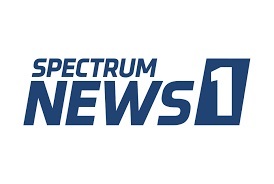
RNC Member Talks Importance of Trump Fundraising in "Blue" California
February 19, 2020
By Natalie Brunell Beverly Hills
PUBLISHED 1:29 PM ET Feb. 19, 2020
SHARE
BEVERLY HILLS, Calif. — Having attended most of President Donald Trump’s fundraisers in Los Angeles, Shawn Steel, the Republican National Committee member from California is always proud to show off his memories from those visits.
Steel says he looks forward to the unpredictable nature of the speeches and the high energy of fellow supporters and shared his expectations for Trump’s Beverly Hills fundraiser at the Montage Hotel.
“The beautiful thing about going to a Trump rally or a dinner is you have no idea. It’s very spontaneous, it’ll be a lot about California,” Steel said.
Steel says he agrees with Trump’s harsh criticisms of California and of the Democratic policies in Los Angeles.
“California is deteriorating. You just have to drive down the streets, you have to see what’s going on with the overpasses and the underpasses. And you have a criminal element that’s festering everywhere. The quality of living is at stake in California,” Steel said.
Even though some of the President’s criticisms of the state have led to his threatening to cut federal aid to various California agencies, Steel says money from Californian Republican donors will continue to flow in the President’s direction.
In fact, the top beneficiary of California-based campaign contributions in 2019 was President Trump.
“California is not going to be in the middle of the election, but it’s going to be financing a lot of the election,” Steel said.
That financing isn’t sitting well with anti-Trump protesters who came to the Montage Hotel Tuesday, including Chantelle Hershberger of Refuse Fascism. Hershberger had just returned from spending three weeks in Washington, D.C. at the impeachment trial and came to rally outside the fundraiser.
“These people are the haves, and you know they want to see Trump succeed because it is empowering them,” Hershberger said. “It kind of shines light on the whole corrupted system.”
Protesters at times clashed with Trump supporters outside the fundraiser venue, but those excited to see the President’s motorcade and shoot clips of it on their smartphones appeared to outnumber the activists.
As for the concerns raised by protestors, Steel says he doesn’t always agree with what Trump says or how he expresses himself, but he says he’s proud to support the President’s push to raise green all across the blue state.

You and the Law: Obesity in personal injury, workers comp
February 12, 2020
By Dennis Beaver |
February 12, 2020 at 6:30 p.m.
Close to 40% of Americans are obese. That’s over 93 million people, according to the Centers for Disease Control. 100 pounds or more over your ideal weight = morbid obesity.
Today’s story is not a lecture, nor is it intended to be seen as fat shaming anyone.
Rather, a look at a topic, “Often not addressed and filled with prejudice,” as Southern California personal injury attorney Shawn Steel commented when I ran this remarkable fact situation by him.
Doctor is discriminating?
“I just came from my doctor’s office, who is treating me for a really bad whiplash with, back problems and I’m very upset,” ‘Alex’ texted. “I am a victim of weight discrimination, based on what he told me and his attitude. Can we Skype? I want you to see what I look like and tell me if you think his comments amount to illegal weight discrimination.”
Within minutes I was looking at a 40-ish guy in complete denial of his obvious morbid obesity. In reply to my question, “So, what did the doctor tell you,” he stated:
• How dare you come in here drinking a Starbucks overflowing with whipped cream!
• You weigh 350 pounds, had this minor auto accident, but your weight alone is the major cause of your neck and back problems. I warned you about this last time. You have one hour to enroll in our weight management program, come back with proof, and if you do not, consider yourself discharged. I will not see you again.”
Does weight have impact?
A major study published in 2010 looked at the relationship of obesity and vehicular injuries: “BMI and Risk of Serious Upper Body Injury Following Motor Vehicle Crashes: Concordance of Real-World and Computer-Simulated Observations.”
It concluded that obese men and women—with a high BMI—have significantly greater upper body and back injuries than people of normal weight. The study looked at the bio-mechanics of accidents, In brief, the more overweight the patient, the worse the injury, just what the doctor told Alex.
Our Skype chat
Alex Skyped me from a Starbucks, and was sipping on a large drink, topped with whipped cream! At first I thought this was a joke, but it was no laughing matter.
“Did you sign up for the weight-reduction program?” “No, I am just fine the way I am and my weight should have no effect on my getting treatment or the value of my case when it settles,” he confidently replied. Alex is completely wrong. Attorney Steel is familiar with these fact situations, pointing out: “Prejudice against the obese is built into the legal system, so when an overweight person makes a good faith effort to follow doctor’s instructions it will help healing, and the case. You do not have to be thin at the end of six months, but the more effort an obese person puts into losing weight after an accident shows that you are serious, that you have tried to help yourself. “Regardless of the injury, bio-mechanically the patient will be viewed as a walking catastrophe, coming into court with one arm tied-behind. So, patients and clients need to understand that 50% of every case depends upon the credibility and likability of the patient. Complainers, and unhappy people who make no effort to address their weight issues generally do poorly in court,” Steel underscored.
Effect on settlements?
Insurance adjusters — and workers compensation underwriters — are well aware of the high cost of obesity of in their worlds: longer treatment, expensive diagnostic tests, more time off work. In a typical auto accident case with an obese client, I have had adjusters bluntly say:
“Don’t go blaming my driver for your client’s back and internal injuries. What do you expect when a 300-pound body collides with a steering wheel, dashboard, or his internal organs are severely injured by all that weight compressed by a seat belt?”
I’ve seen cases with obese clients resolve for much less than with people of normal weight in a similar accident.
There are many studies showing the relationship of obesity to an increase in work-place injuries and their severity. One, “Prevalence of work-site injuries and relationship between obesity and injury among U.S. workers: NHIS 2004-2012,” concluded:
“Overweight and obese workers were 25% to 68% more likely to experience injuries of greater severity than normal weight workers.”
Moral to today’s story: The cost of obesity hits accident victims and employers right in the pocketbook.
Alex had a physician who leveled with him. This was not discrimination, rather, the truth. No one should be rewarded for voluntary behavior that is costly to society.

Coronavirus: US-China Talks Must Go Beyond Trade & Include China’s Biomedical Practices
February 12, 2020
California military bases have taken the lead in the national coronavirus response
California is taking on a big responsibility for coronavirus, but can we really trust the Chinese government to tell the truth about their medical practices?
When President Trump announced a phase one trade deal with China, it looked like the king of deals had brokered an end to the 18-month dispute between the world’s two biggest economies.
Then came the coronavirus.
Hour by hour, World Health Organization officials are updating the number of confirmed cases and fatalities resulting from the coronavirus. As of this writing, the death toll has surpassed 1,100 – with more than 45,000 cases confirmed in 28 countries and territories, including 13 cases in the United States and multiple cases in California.
Our armed services have taken the lead in the national coronavirus response with Marine Corps Air Station Miramar in San Diego, Travis Air Force Base in Sacramento, and March Air Reserve Base in Riverside all acting as coronavirus quarantine facilities.
The full extent of the outbreak remains unclear, but there’s no question that the epidemic – and ensuing response – will have a major impact on the global economy. Airlines have suspended flights to China. Chinese officials have ordered a lockdown of more than 56 million people, who can’t go to work, school or shop. Wuhan, the center of the coronavirus outbreak, is a major manufacturing hub, supplying components for hundreds of US-based suppliers, including Apple, Tesla and General Motors.
“Even if it is potentially contained within the borders of a country or a region, there’s so much global manufacturing and trade that happens in these areas,” Nita Madhav, chief executive officer of Metabiota, a San Francisco company that studies the spread and impact of epidemics, tells VOA News. “And that could disrupt … the manufacturing of different goods and the shipping of them across the world.”
If a trade deal between the two largest economies in the world can be rendered moot by an exotic animal seller at a Wuhan seafood market, it’s an indication that the next round of US-China talks must go well beyond trade to include a hard look at the propaganda, censorship and human rights violations within China’s biomedical sector.
China’s ruthless Communist government quashes all dissenting opinions and censors any content that would cause the public to question the official party line. That includes matters of public health. Initially, Chinese censors ordered journalists to keep the outbreak off the front pages and barred any reporting that differed from the official reports by state-controlled media.
As recently as January 19, Chinese officials were assuring the world that the outbreak was “still preventable and controllable.” And the facts were rewritten to support that story.
The Financial Times reports that hospitals “were given a target of ‘zero infections’ among staff, with hospital deans liable to be fired for failing to meet the target. As a result, medical staff were slow to report infections among nurses.” In some cases, Chinese officials changed death certificates to eliminate any connection between fatalities and the coronavirus.
Even the virus’ origin story – that 2019-nCoV somehow made the jump from animals to humans via the Huanan Wholesale Seafood Market – is being questioned. A new study published in the Lancet reveals data that “suggest the virus, and its spread among humans, took off weeks earlier than Chinese officials said.”
“Understanding a disease’s origin story is important, both because it helps epidemiologists track and prevent its spread and because a virus’s genetic makeup can inform the design of vaccines and treatments,” explains Popular Science. “The details of a contagion’s provenance can also help policymakers figure out how to prevent future outbreaks.”
China’s response to coronavirus isn’t isolated but reflects an endemic failure to adhere to basic standards of medical ethics, human rights and public health transparency.
Last year, an independent British tribunal chaired by Sir Geoffrey Nice, a former prosecutor at the international criminal tribunal for the former Yugoslavia, concluded that China has been engaged in the ghoulish practice of harvesting organs from religious minority groups and political prisoners, primarily members of the spiritual community Falun Gong.
“The conclusion shows that very many people have died indescribably hideous deaths for no reason,” Sir Nice told the Guardian. “There is no evidence of the practice having been stopped and the tribunal is satisfied that it is continuing.”
China promised to end forced organ harvesting in 2015. That is difficult to substantiate due to the country’s censorship and lack of transparency. Much like with coronavirus, there is reason to believe that the government has falsified public health datasets. A study published in the BMC Medical Ethics journal casts doubt on the legitimacy of the government’s official organ donation statistics.
“They’re too neat to be true,” Matthew Robertson, the study’s lead author told the Guardian. “These figures don’t appear to be real data from real donations. They’re numbers generated using an equation. It is difficult to imagine how this model could have been arrived at by mere chance, raising the distinct possibility that it was intended to deceive.”
For years, the world has ignored Chinese human rights abuses against prisoners of conscience, Muslims, Tibetan Buddhists, Christians, and members of Falun Gong. Now, China’s biomedical practices are a threat to the entire world.

When Lawyers Refuse to Pay a Client's Doctor Bill
February 07, 2020
By H. Dennis Beaver, Esq. | Author of "You and the Law"
February 7, 2019
It's more common than you might think in personal injury lawsuits, and doctors, chiropractors and physical therapists don't have to stand for it.
Today’s story will be of special interest to two groups of readers who are linked together by what is known as a lien, which I’ll explain in a moment. They are:
(1) People who were injured in an auto accident who lack good health insurance or adequate amounts of auto medical payments coverage but need treatment from a chiropractor, doctor or physical therapist. They hire an attorney to file an insurance claim against the responsible party.
(2) Chiropractors, doctors or physical therapists who provide treatment, and, as Los Angeles based attorney Shawn Steel adds, “contractually — on a lien basis — agreeing to wait for payment of their services when the case is settled.”
An Enforceable Contract
Specializing in personal injury cases and representing chiropractors for over 35 years, Steel explains that a lien, “It is a binding, enforceable, written contract signed by the patient, attorney and health care provider requiring bills to be paid from the proceeds of settlement prior to the individual receiving any funds.”
But he was quick to point out, “That’s how it is supposed to work. It is what the law requires, but in my experience, over three-quarters of lawyers who handle personal cases on a lien basis flagrantly refuse to honor the lien, and far too many health care professionals just don’t know what to do when they are stiffed, or their bill is cut to shreds.”
The recent example of our client, “Dr. S.” is typical.
‘My Polite Requests to Pay Our Bill was Ignored!’
I have a soft spot in my heart for chiropractors and respect their abilities. Years ago, a chiropractor delivered me from the worst and most painful stiff neck imaginable. I became a believer, and we referred our auto accident clients to him for years, always receiving positive feedback. So, when a chiropractor is badly dealt with by a lawyer, I take that personally … and that’s what happened to Dr. S. His lien was signed by both longtime local attorney “L” and the patient, but when the case was settled the lawyer refused to pay the chiropractor’s bill. “We placed call after call to the lawyer’s office and did not even receive the courtesy of a return phone call,” Dr. S. explained, not only frustrated, but hurt. I set up a conference call with both the attorney and chiropractor, asked why the bill — which had been attached to the chiro’s report and was necessary in order to settle the case — had not been paid. Instead of hearing, “Sorry, I will look into it and get right back to you,” there was denial of ever receiving it and a claim that the file was in storage, away from his office. Finally, L yelled, “So sue me!” “Nobody wants to sue you,” I replied. “Just find the file and pay the bill. You know the consequences. You have 48 hours to have a check delivered to the chiro’s office or find yourself in court.” Needless to say, the bill was paid at once — in full. But this should not have dragged on for so long, and that is Steel’s message to all health care providers who treat on a lien basis: “Understand your rights and the attorney’s legal obligation.”
The Lawyer Is a Fiduciary – Do Not Let Anyone Browbeat You Down!
“In all 50 states,” Steel points out, “the Doctor’s Lien, or Letter of Protection as it is also called in some states, creates a fiduciary relationship, making the lawyer trustee of settlement funds for the benefit of the client, the doctor and, finally, the attorney. “I find repeatedly lawyers insisting that the doctor cut his bill, but the attorney refuses to reduce his own bill when the settlement is not as high as was expected — or that is what the lawyer tells the doctor. In the typical case this is inherently unfair, as the doctor has spent weeks or months in treating the patient, while the lawyer perhaps saw the client once and made two phone calls. “There is nothing wrong with everyone taking a little less than full payment if the money just isn’t there, Steel says, “but I urge my doctor clients to stand up to strong-arm tactics.” He recommends the following steps:
Get it in writing.
“When you get a phone call asking that you cut your bill, ‘because the settlement was too low and I can only get you $1, 000,’ reply by stating, ‘Please send me a copy of the draft, settlement agreement and client’s proposed disbursement.’ “Remember, a lawyer can easily lie on the phone, but will hesitate to do so in writing. You have the legal right to see all of those documents and how funds are to be distributed.”
Be persistent.
If that information is not provided, then, Steel recommends:
- Send a demand letter to the lawyer with a seven-day deadline. Attach the lien, your report and bill. In your letter state, “I am sure you are familiar with the Rules of Professional Conduct.”
- On the eighth day, file a complaint with the state’s Bar Association, send the attorney a copy of it and file your suit in Small Claims Court.
“You will get paid — and, if it goes to court, judges almost always rule in favor of the doctor,” Steel concludes.
Advice for Clients/Patients Caught in the Middle
It’s important for patients to understand that they are obligated for the professional services they’ve received. So, a good idea is to keep in frequent contact with your lawyer, and when it’s time to settle the case, go into the office if possible and go over payment of the outstanding bills. If your lawyer negotiates a reduced fee for the doctor’s bill, that’s fine, and you want to see proof in writing. The take-away from this story for patients is to realize you could be on the hook for unpaid bills related to your accident if the lawyer refuses to pay your health care provider. Signing a lien simply means that the doctor agrees to wait for payment — from the lawyer — when the case settles. And if the case doesn’t settle, or the lawyer drops you? You are still responsible to pay the bills of your health care provider, so stay on top of how your case is coming along.
|
Articles
2025
2024
2023
2022
2021
2020
2019
2018
2017
2016
2015
2014
2013
2012
2011
2010
2009
2008
2007
2006
2005
2004
2003
2002
2000
1998
1996
|